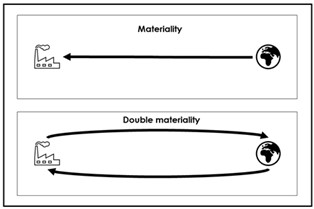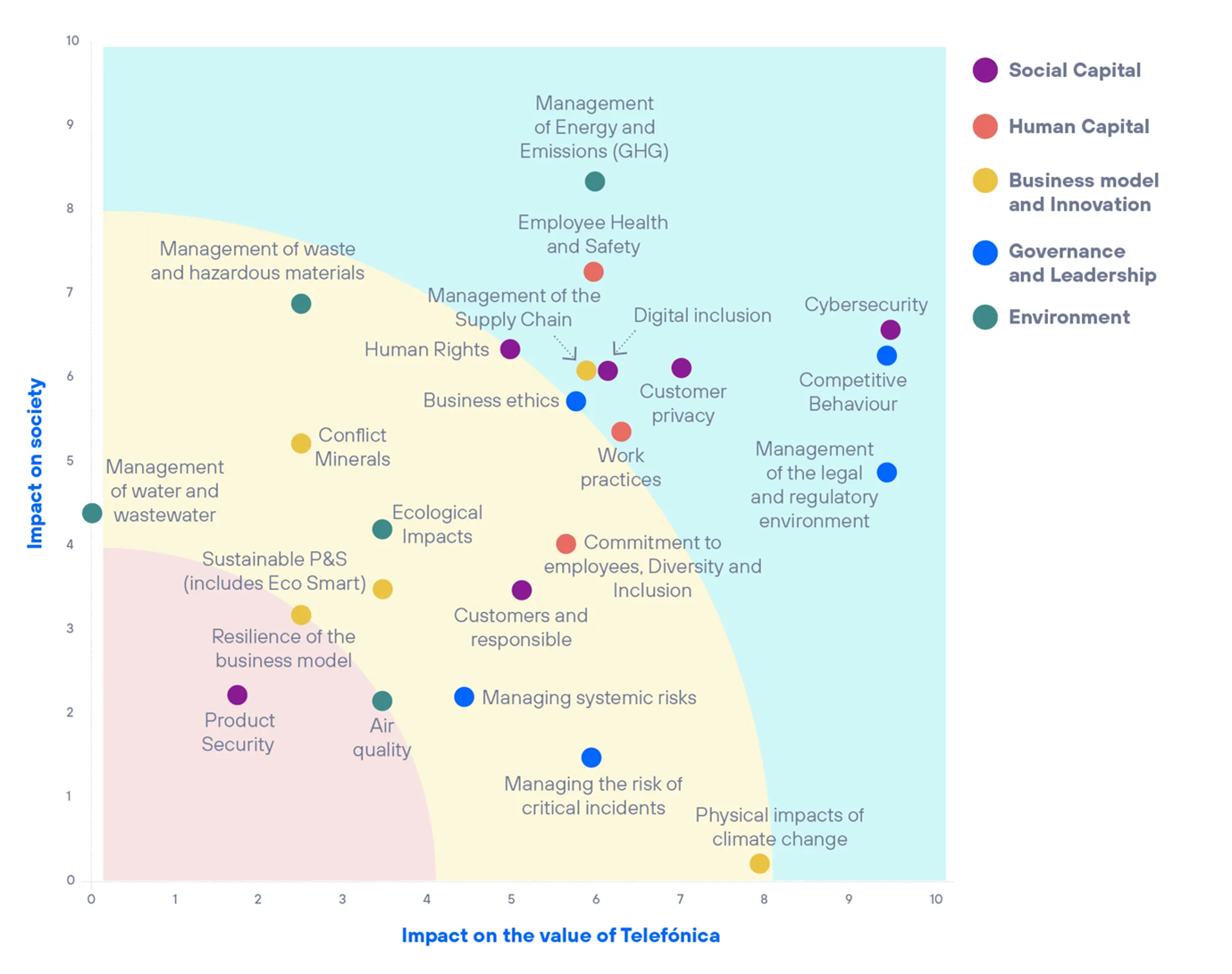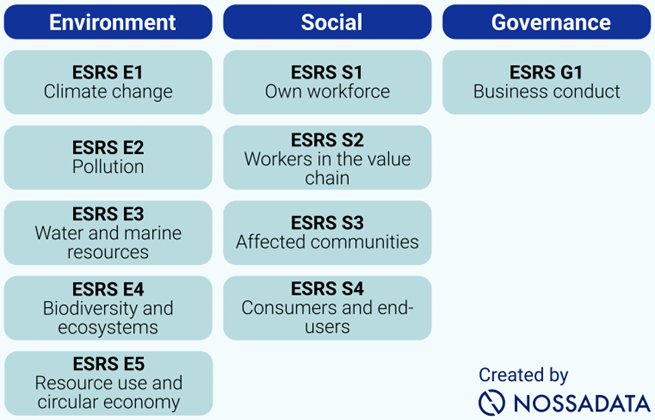
29 September 2023 – Simon C.Y. Wong explains the meaning of double materiality and why it will intensify focus on how companies are affecting the wider world.
Corporations are dominant actors in modern economies [1], with vast impacts on society and the environment – from the provision of goods and services that lengthen and enrich lives to those that exploit our inherent vulnerabilities [2] and contribute to increasingly devastating ecological harm. In the Anthropocene era, we are currently in, human activity will ultimately determine whether Earth can continue to support life. Accordingly, clearly understanding how businesses – especially larger ones that are disproportionately influential – are impacting their surroundings is vital so that we can determine how best to keep our ecosystems fit for habitation.
What is double materiality?
“Double materiality” seeks to broaden corporate sustainability reporting from its former investor-centric focus on how sustainability factors impact a company and its financial prospects (single “materiality” or “financial materiality”) to an equal emphasis on how the firm is impacting society and the environment (“impact materiality”)(see Exhibit 1 below).
Exhibit 1. Source: London School of Economics and Political Science [3].
In a nutshell, double materiality reporting requires companies to disclose information on significant sustainability matters from a financial perspective, an impact perspective, or both perspectives.
Take Telefonica as an example. According to its 2021 double materiality matrix (see Exhibit 2 below), “management of water and wastewater” is material only from an impact perspective (i.e., important to stakeholders but not affecting Telefonica’s financial prospects) while the “physical impacts of climate change” is material only from a financial perspective (i.e., will impact Telefonica’s financial prospects significantly but not viewed by stakeholders as a major impact caused by Telefonica). On the other hand, many matters – such as “management of energy and emissions (GHG)”, “employee health and safety”, and “cybersecurity” – are material from both vantage points.
Under the traditional single materiality approach, “physical impacts of climate change” would have been disclosed but likely not “management of water and wastewater”.
Exhibit 2. Source: Telefonica [4].
Double materiality assessment under the EU Corporate Sustainability Reporting Directive
Although companies have been urged – and, in some jurisdictions, obligated – to report on their external impacts for many years [5], the term “double materiality” owes its prominence largely to the EU Corporate Sustainability Reporting Directive (CSRD), which will mandate a double materiality assessment for around 50,000 reporting companies from 2024 onwards [6].
The European Sustainability Reporting Standards (ESRS) [7],which specify the information required to be disclosed by companies subject to CSRD reporting, also sets out the key components of a double materiality assessment.
In terms of definitions, ESRS states a sustainability matter is material from:
(1) an impact perspective “when it pertains to the [entity’s] material actual or potential, positive or negative impacts on people or the environment over the short-, medium- and long-term”; and
(2) a financial perspective “if it triggers or could reasonably be expected to trigger material financial effects on the [entity]." [8]
A double materiality assessment must cover both an entity’s own operations as well as its upstream and downstream value chain and must consider the topics and subtopics covered in the 10 ESRS topical standards (see Exhibit 3). Detailed reporting on each topic is required only if the company deems, following an assessment, that such topic is material. Due to the wide-ranging impacts of climate change, where a company determines it to be not material, it must explain its rationale in detail and include a “a forward-looking analysis of the conditions that could lead [it] to conclude that climate change is material in the future." [9]
Exhibit 3. Source: Nossa Data [10].
To ensure that reporting companies accurately identify and assess their most significant actual and potential impacts on people and the planet, ESRS stresses the vital importance of engaging with affected stakeholders (see ESR 1 section 3.1), including
employees, financial stakeholders, suppliers, consumers, customers, end-users, local communities, trade unions, civil society organisations, and governments, among others. This engagement will deepen a company’s understanding of what their stakeholders deem important and will hopefully strengthen relationships and reduce the possibility of misunderstanding between parties as well.
To aid informed decision-making in the executive suite, it is essential that senior leaders, including board members, participate directly in stakeholder engagement so that they can hear first-hand how the company’s products, services, and operations are impacting the wider world.
How candid will companies be on their impacts?
The effectiveness and impact of double materiality reporting will ultimately depend on the clarity and relevance of the information divulged. While we can expect companies to highlight their positive impacts, how candid will they be about their negative impacts, particularly if doing so might prompt investigations, new regulations, and even lawsuits? Will a purveyor of sugary drinks, for example, be fully forthcoming about the harmful health impacts of its most popular products? Similarly, will firms whose advertising campaigns aim to stoke consumer anxiety and discontent in the hopes of increasing sales voluntarily admit that their tactics are detrimental to mental and planetary health?
Further questions arise regarding how financial institutions and other stakeholders will respond to the information disclosed. For example, will shareholders divest from companies that cause significant harm, or will they instead engage to drive meaningful change? And what are the factors that would drive each choice?
Important topics such as this are raised in the CISL Sustainable Finance online course, where I am Head Tutor. Students are encouraged to reflect on their implications and share their perspectives in written assignments and tutor-facilitated discussion forums.
Find out more about our other online courses.
Notes and references:
[1] “The business sector overall contributes 72 percent of GDP in the OECD, and corporations with more than $1 billion in revenue account for an increasingly large share of that.” McKinsey & Company, A new look at how corporations impact the economy and households, 31 May 2021. Available at https://www.mckinsey.com/capabilities/strategy-and-corporate-finance/our-insights/a-new-look-at-how-corporations-impact-the-economy-and-households [Accessed: 17 September 2023].
[2] See, for example, the discussion in Astra Taylor, Our Economy Thrives on Bad Feelings, The New York Times, 18 August 2023. Available at https://www.nytimes.com/2023/08/18/opinion/inequality-insecurity-economic-wealth.html [Accessed: 25 September 2023].
[3] LSE, 2021, ‘Double materiality’: what is it and why does it matter? Available at: https://www.lse.ac.uk/granthaminstitute/news/double-materiality-what-is-it-and-why-does-it-matter/ [Accessed: 25 September 2023].
[4] Telefónica, 2021. Double materiality: its importance and how we apply it at Telefónica. Available at: https://www.telefonica.com/en/communication-room/blog/double-materiality-its-importance-and-how-we-apply-it-at-telefonica/ [Accessed: 26 September 2023].
[5] Through the Global Reporting Initiative and similar programmes as well as via regulations such as the EU Non-financial Reporting Directive (NFRD).
[6] See, in particular, CSRD articles 19a and 29a. Available at https://eur-lex.europa.eu/legal-content/EN/TXT/PDF/?uri=CELEX:32022L2464 [Accessed: 25 September 2023].
[7] European Commission, 2023. The Commission adopts the European Sustainability Reporting Standards. Available at: https://finance.ec.europa.eu/news/commission-adopts-european-sustainability-reporting-standards-2023-07-31_en [Accessed: 25 September 2023].
[8] See CSRD sections 3.4 and 3.5, respectively.
[9] See ESR 1 section 3.2, paragraph 32.
[10] Nossa Data, 2023. Nossa Data ESG Visualisations. Available at: https://www.linkedin.com/feed/update/urn:li:activity:7098245604010536960/ [Accessed: 26 September 2023].








